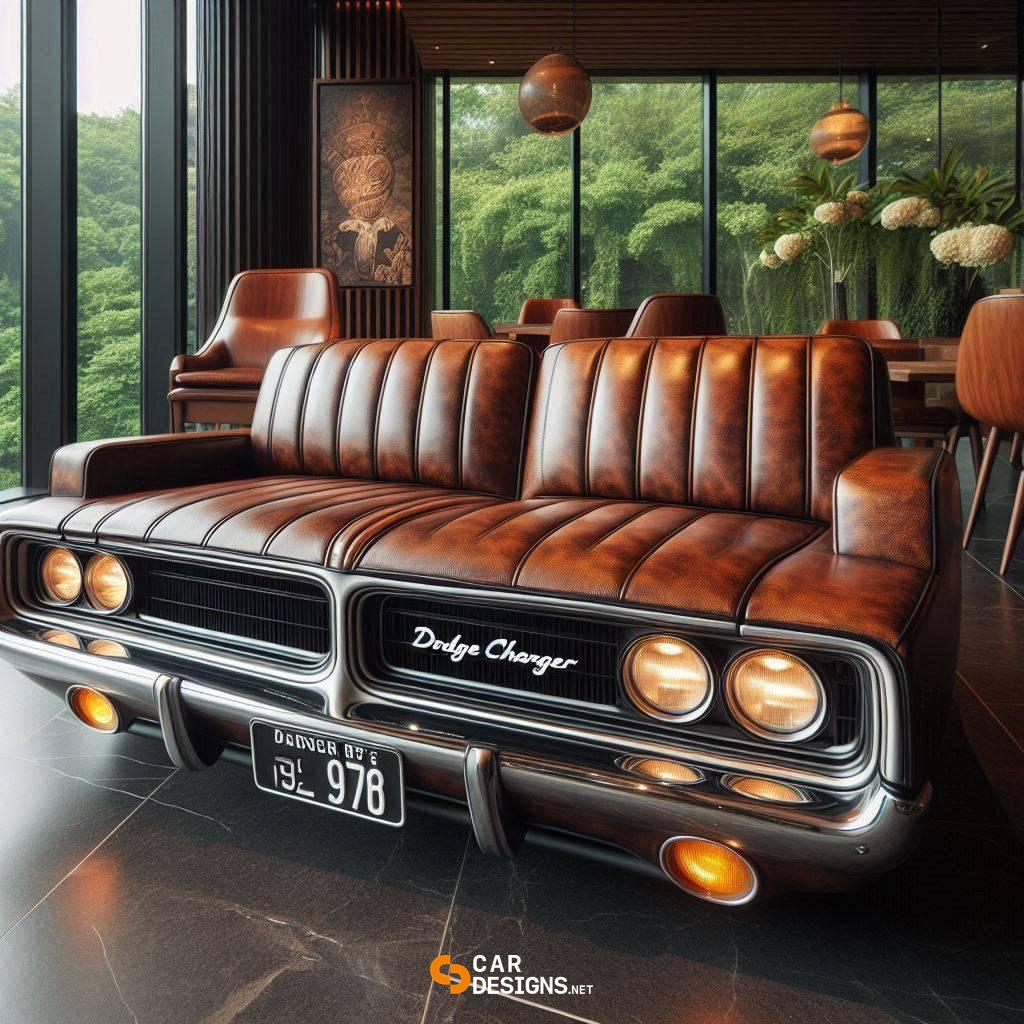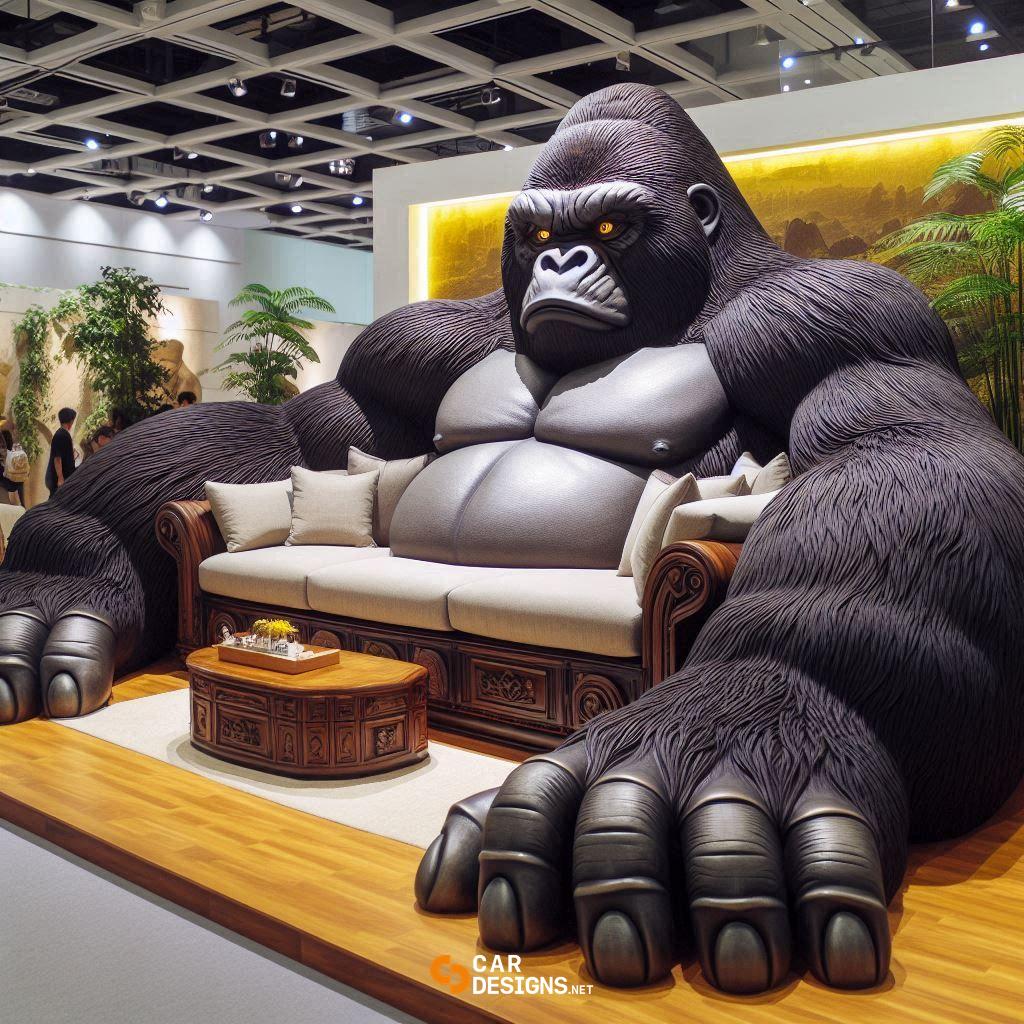Skull Dining Tables: Gothic and Glamorous Furniture
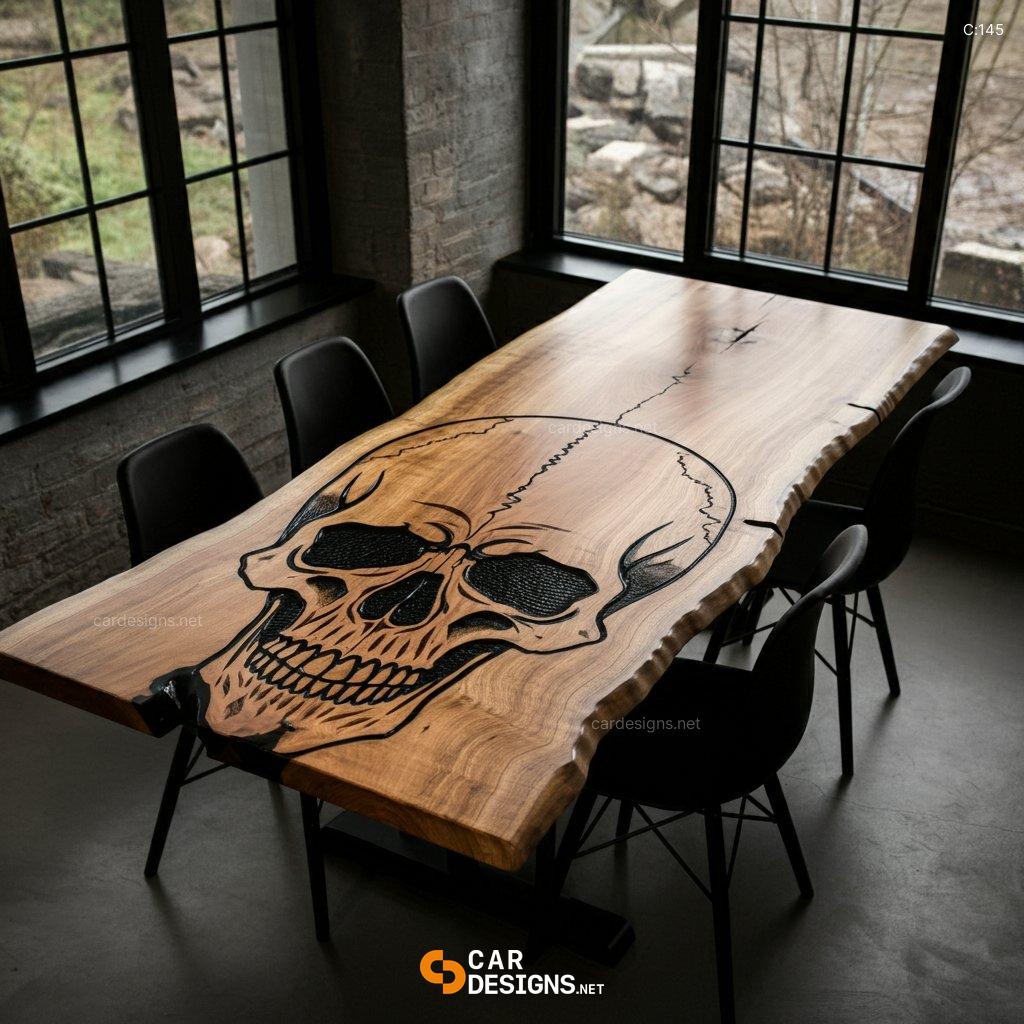
In the ever-evolving world of interior design, unconventional styles continue to push the boundaries of creativity and individuality. Among the growing trends in gothic and alternative home décor, Skull Dining Tables have emerged as a bold and artistic statement piece that balances both gothic allure and glamorous elegance. From their dark and mysterious aesthetic to their intricate craftsmanship, skull dining tables add a striking edge to any dining space. This article will delve into the fascinating world of skull dining tables, exploring their origins, design elements, materials, and how they can transform your living space into a uniquely captivating environment.
Part 1: The Rise of Gothic Design in Modern Interiors
Gothic Revival: A Brief History

Gothic design has long been associated with drama, mystery, and an air of grandeur. Originally stemming from the architectural movements of the Middle Ages, Gothic Revival saw a resurgence in the 19th century, bringing about a renewed interest in dark, ornate designs, pointed arches, and intricate detailing. While the movement began in architecture, it soon extended to furniture and interior design, laying the groundwork for the darker, more dramatic styles that influence many modern homes today.
The gothic aesthetic appeals to those who admire medieval history, mystery, and a certain sense of romantic darkness. It often incorporates deep hues—like black, red, and purple—combined with intricate detailing and motifs that evoke power, the macabre, and mysticism. Among these motifs, skulls have a long-standing cultural significance, symbolizing mortality, transformation, and even protection in many traditions.
The Intersection of Gothic and Glamorous
In recent years, the blending of gothic elements with luxurious and glamorous details has created an exciting niche within the interior design world. The combination of dark, mysterious aesthetics with the sparkle and shine of glamour provides an intriguing contrast, offering a way to bring personality and edge to home décor. This fusion is particularly evident in pieces like the Skull Dining Table, where dark motifs such as skulls are married with opulent materials, sleek finishes, and sometimes even metallic accents.
Part 2: Exploring the Skull Dining Table
The Appeal of Skull Motifs in Home Décor

Skulls, long associated with gothic and alternative fashion, have increasingly become a favorite motif in modern furniture design. Whether representing mortality, rebirth, or simply an appreciation for the darker side of life, skulls resonate with people who want their homes to reflect individuality and a sense of non-conformity.
In furniture, skulls evoke a bold aesthetic, often serving as a conversation starter. Their presence in the form of a Skull Dining Table makes a powerful visual impact that anchors a room, creating an atmosphere that feels otherworldly, edgy, and sophisticated all at once. These tables are not just functional pieces; they are works of art, turning everyday dining into an experience steeped in symbolism and style.
Design Features of Skull Dining Tables
1. Material and Craftsmanship
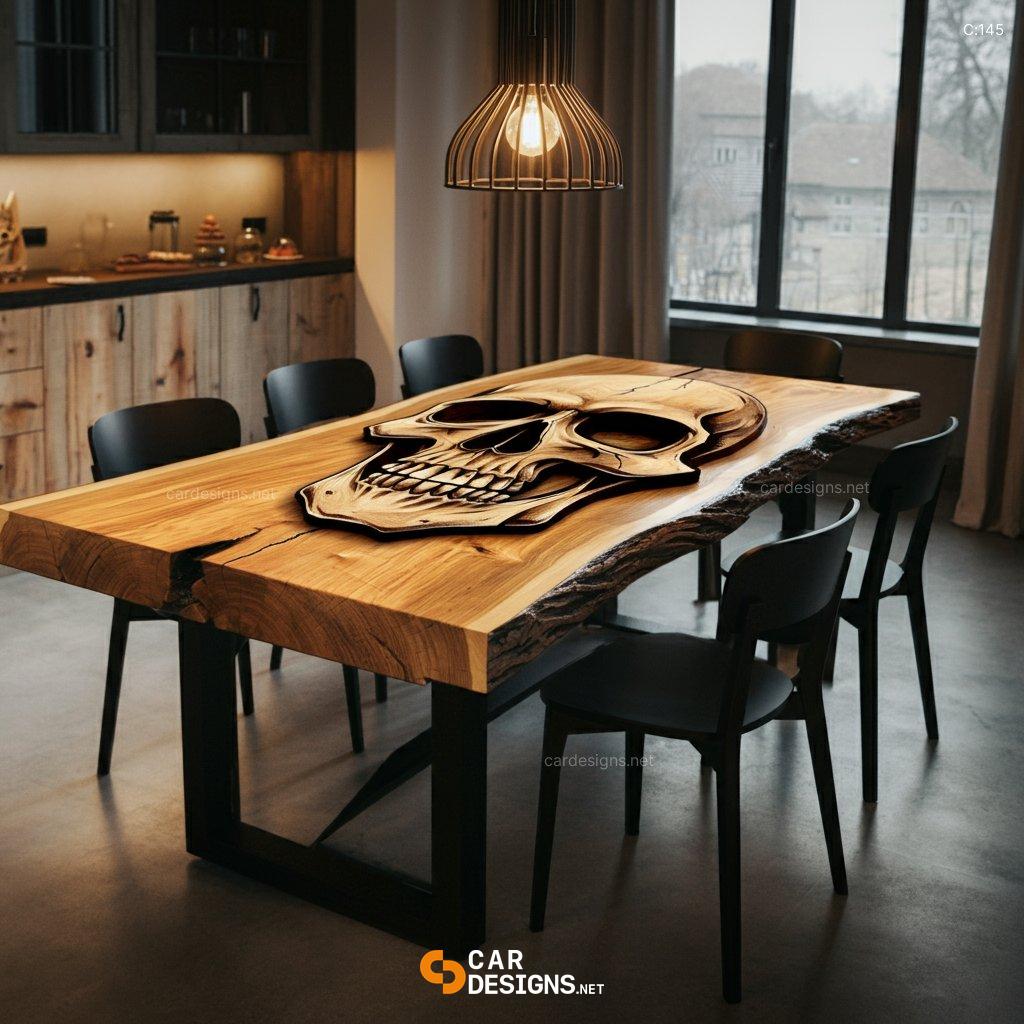
Skull dining tables come in a variety of materials, each contributing to their unique character and feel. Common materials include wood, metal, glass, and even resin. High-quality wood—such as oak, mahogany, or walnut—often forms the base of these tables, offering a rich, timeless foundation that enhances the table’s gothic appeal. Some designs feature intricate skull carvings into the wood itself, creating a tactile and detailed masterpiece.
Metal is another popular material, particularly for the base or legs of skull dining tables. Cast iron or stainless steel bases may be shaped like skulls or skeletal forms, giving the table a sense of structure and permanence while enhancing the gothic aesthetic. Some more avant-garde designs may even incorporate chrome or gold-plated finishes, blending gothic darkness with glamorous shimmer.
Glass tops can elevate the look, adding a modern twist while allowing the intricate base to remain the focal point. The transparency of glass also provides a juxtaposition to the heaviness of the skull design, offering a sense of balance and lightness to the overall look.
2. Size and Scale
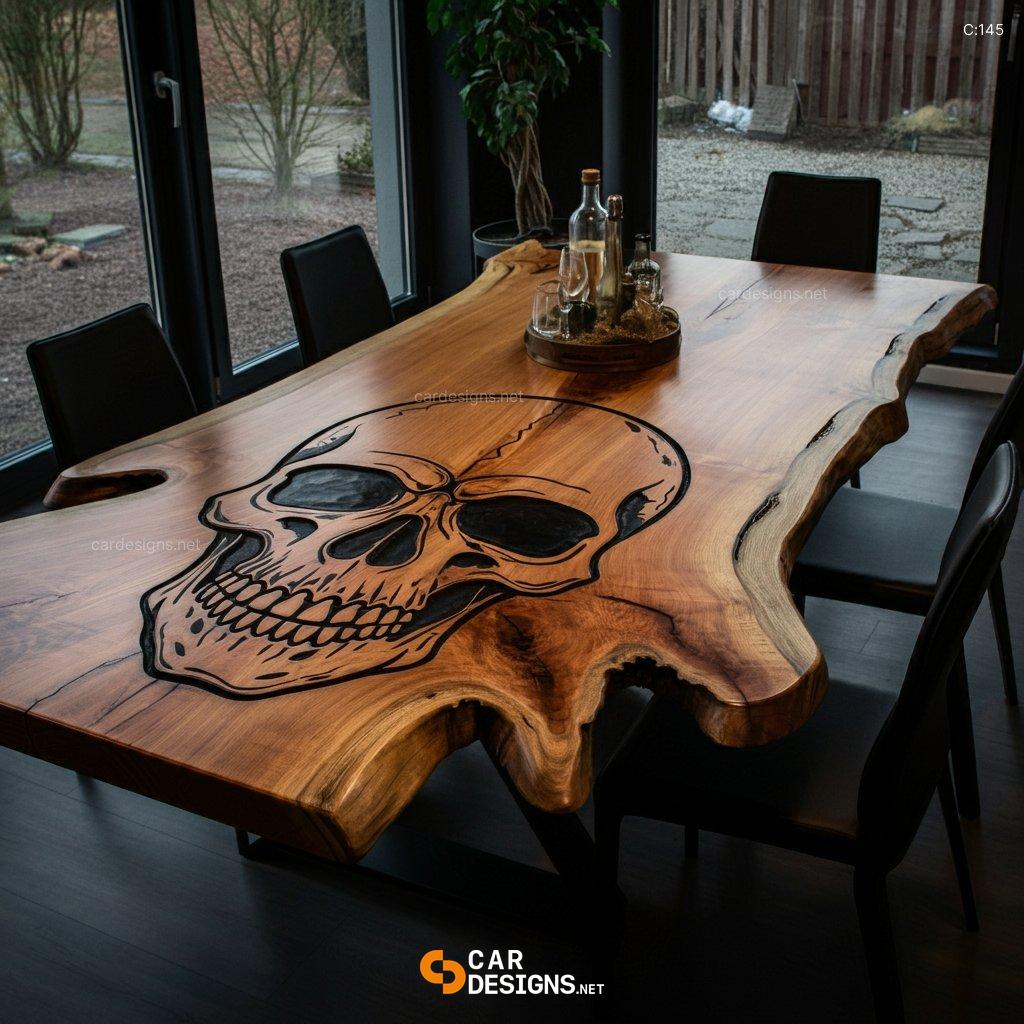
Skull dining tables come in various sizes, from intimate four-person settings to larger, more extravagant banquet tables that seat eight or more. Regardless of the size, the table often becomes the central point of the room due to its bold and eye-catching design. Larger tables may feature multiple skulls or an intricate network of skeletal designs under the tabletop, while smaller tables might focus on a singular, oversized skull motif.
3. Customization Options
For those who want a truly unique piece, many designers offer customization options, allowing you to select the size, material, and even the type of skull design. Whether you prefer a traditional, realistic skull or a more abstract, artistic interpretation, there are endless possibilities for creating a one-of-a-kind skull dining table that reflects your personal taste and the overall aesthetic of your home.
The Balance Between Gothic and Glamorous
While skull dining tables are undeniably rooted in gothic aesthetics, they often incorporate glamorous elements that balance their dark and brooding presence. This fusion can be seen in the materials—such as glossy finishes, crystal embellishments, or metallic accents—that bring a touch of elegance and sophistication to the table. For instance, a matte black table adorned with gold-plated skulls or a glass-topped table with a polished chrome skull base strikes a perfect balance between gothic drama and modern luxury.
Part 3: How to Style Your Space with a Skull Dining Table
Creating a Cohesive Gothic Glam Look
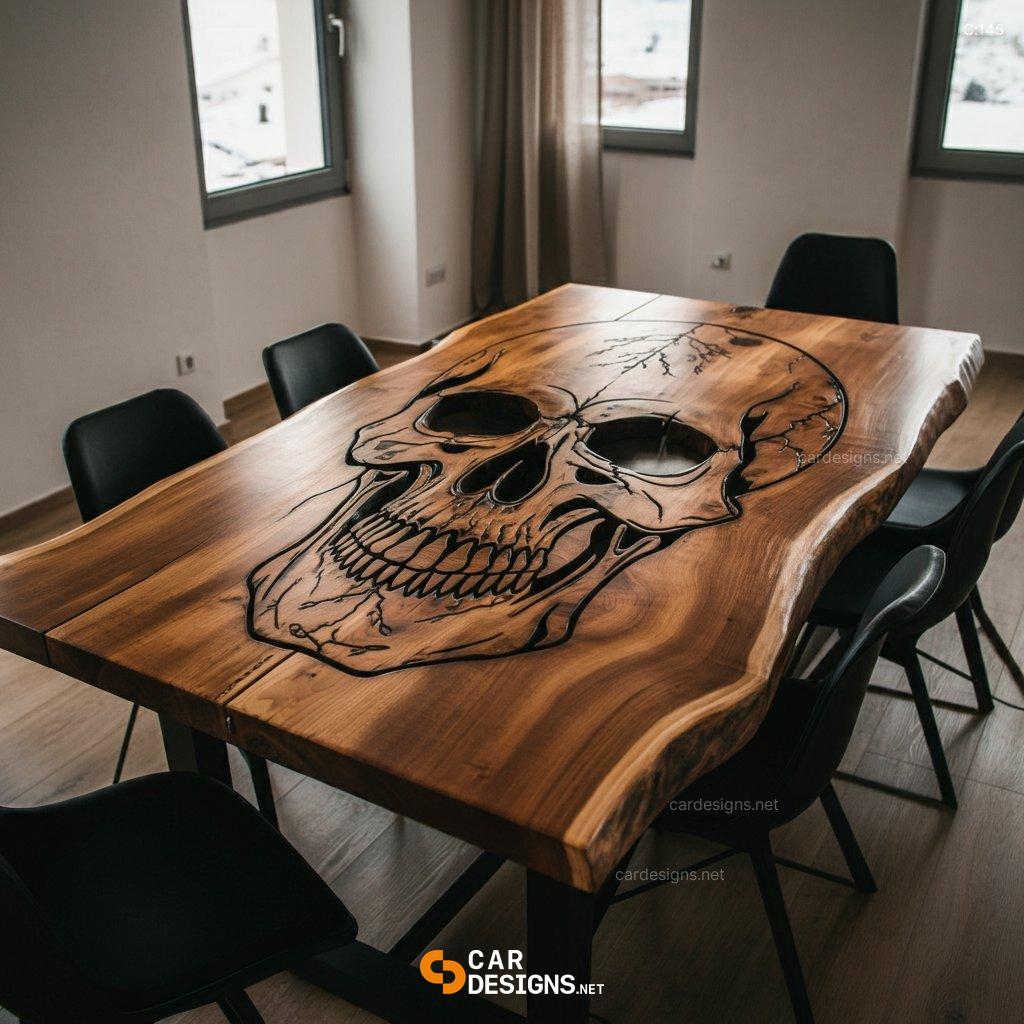
Integrating a Skull Dining Table into your home requires thoughtful consideration of your overall décor. To achieve a cohesive gothic glam look, you’ll want to balance the boldness of the table with complementary furniture and accessories. Here are some key design tips:
1. Color Palette
A skull dining table works best in a space that embraces dark and rich color schemes. Black, charcoal, deep purples, and rich reds are popular choices that enhance the gothic aesthetic. However, adding metallics such as gold, silver, or brass can inject a touch of luxury and prevent the space from feeling too heavy. You can also incorporate white or cream accents to soften the overall look and create contrast.
2. Lighting
Lighting plays a crucial role in setting the mood. Consider hanging a chandelier or pendant light above the skull dining table to add a sense of drama and elegance. Crystal chandeliers, for instance, can enhance the glamorous feel, while wrought iron or antique metal fixtures will lean more heavily into the gothic theme. Dimmer switches are an excellent addition, allowing you to control the ambiance and mood based on the occasion.
3. Complementary Furniture
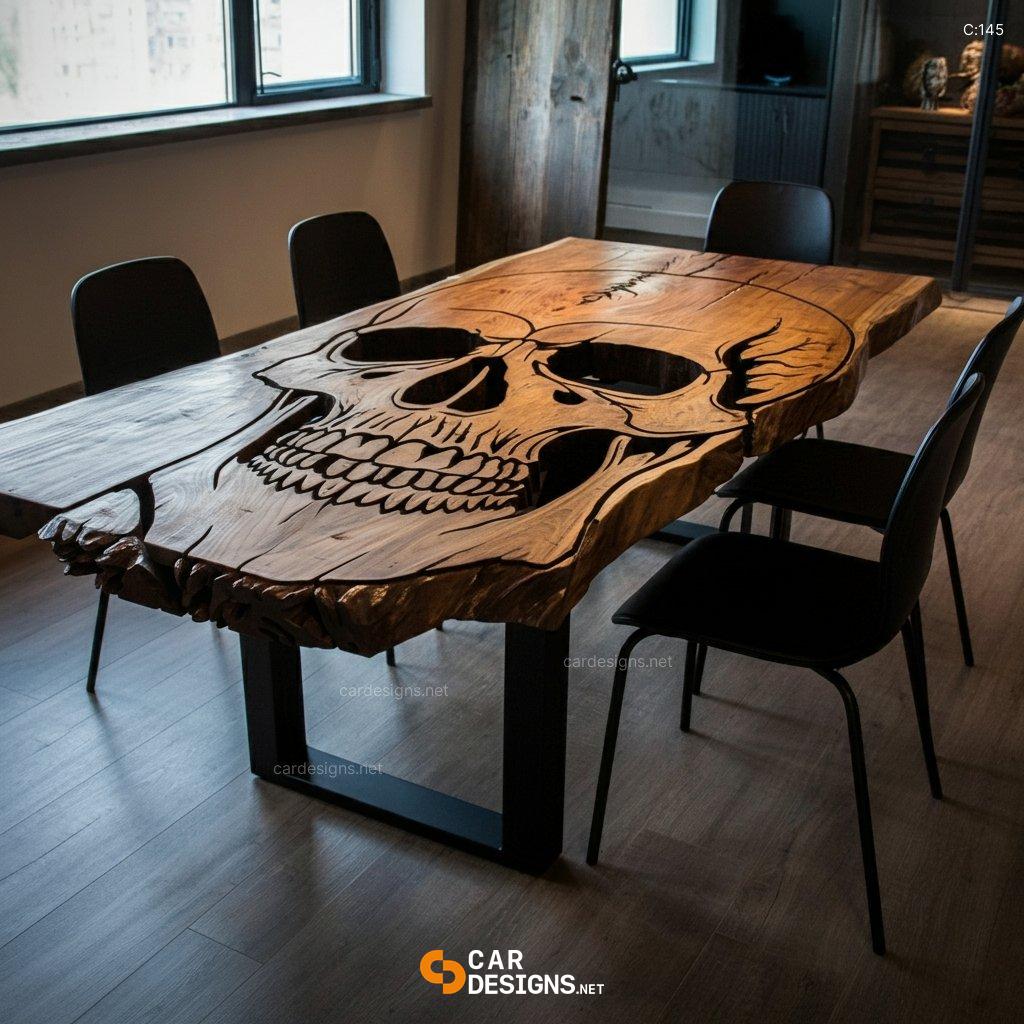
When choosing chairs to accompany your skull dining table, look for pieces that maintain the balance between gothic and glamorous. Velvet-upholstered chairs, ornate high-back designs, or even minimalist metal chairs can complement the table’s bold aesthetic. Furniture with intricate carvings or metallic details will blend seamlessly with the skull motif, adding continuity to the overall design.
You can also extend the gothic theme through other furniture and accessories, such as sideboards, mirrors, and bar carts, all of which can incorporate similar dark and dramatic elements.
4. Accessories and Décor
The right accessories can enhance the overall theme of your dining space. Gothic candelabras, skull-shaped glassware, and dark floral arrangements can all be used to accentuate the mood set by the table. For a touch of glam, add metallic accents in your dinnerware, table runners, or even artwork. Wall art featuring gothic motifs—such as ravens, dark landscapes, or antique mirrors—can further tie the room together.
Versatility in Style
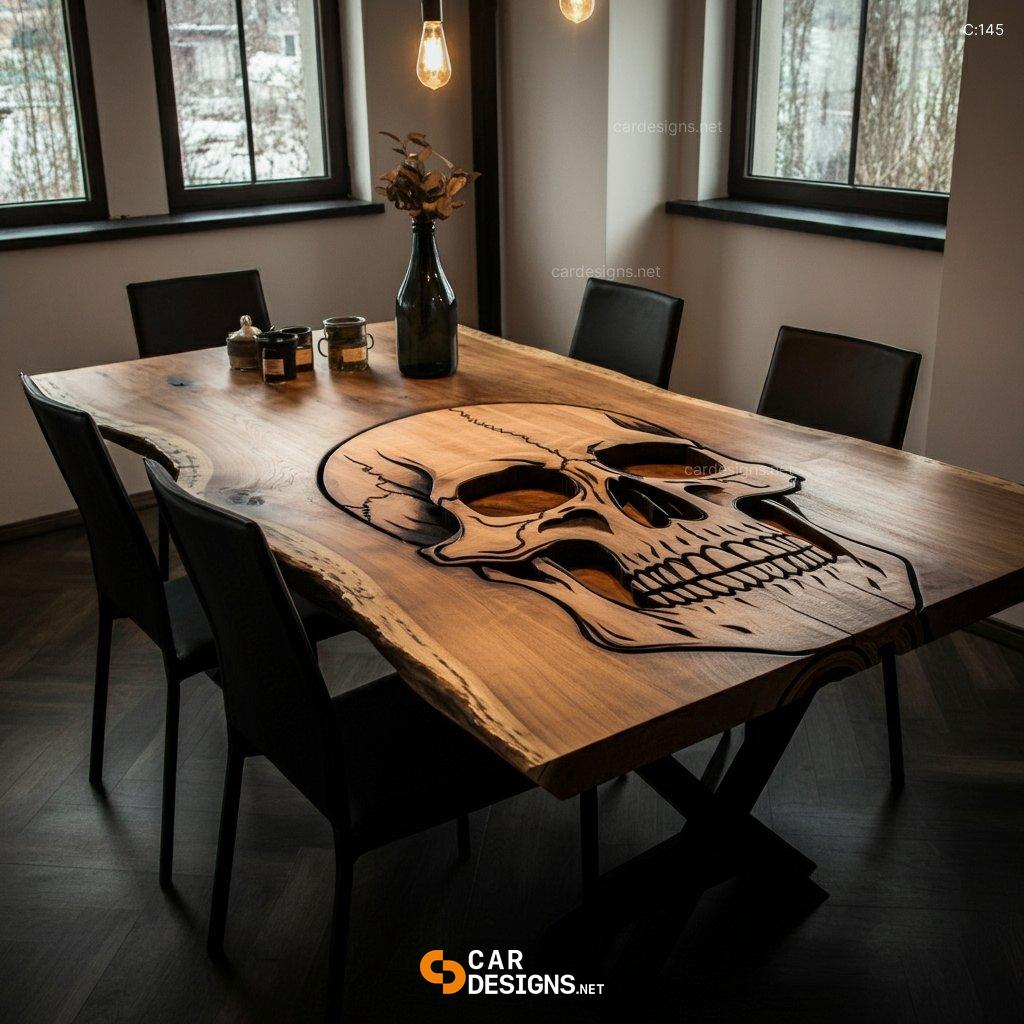
While skull dining tables may initially seem limited to gothic or alternative spaces, their versatility allows them to fit into various design styles. For instance:
- Industrial Style: Pairing a skull dining table with exposed brick walls, metal accents, and neutral tones can create a gritty, industrial look with an edgy twist.
- Modern Minimalism: In a minimalist setting, a skull dining table can serve as a striking focal point against an otherwise simple backdrop, with sleek lines and minimal décor allowing the table to shine.
- Eclectic Style: For those who love mixing and matching styles, a skull dining table can blend with bohemian or vintage pieces, adding a touch of the unexpected to your space.
Conclusion: Making a Bold Statement with Skull Dining Tables

A Skull Dining Table is more than just a piece of furniture—it’s a statement. Its gothic and glamorous design captures attention, creates conversation, and reflects a bold personality that refuses to conform to traditional interior design norms. Whether you’re drawn to the dark, mysterious allure of gothic style or you want to introduce an element of luxury and glamour into your home, a skull dining table can help you achieve a unique and captivating dining space.
